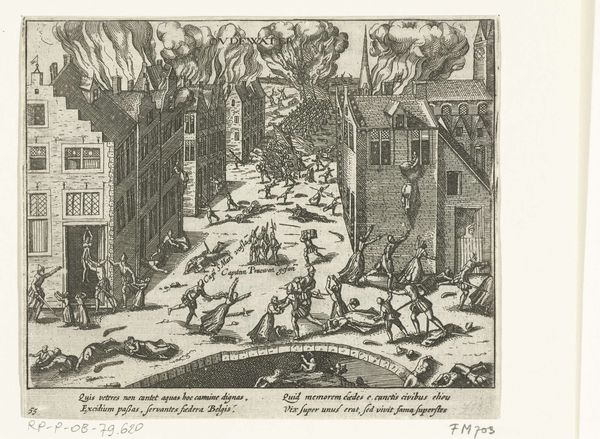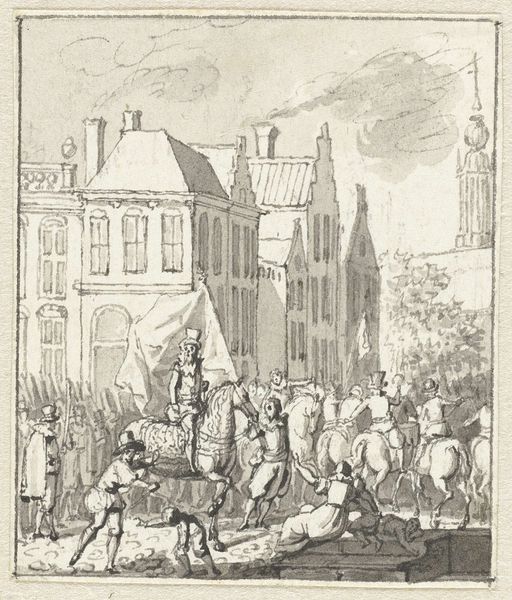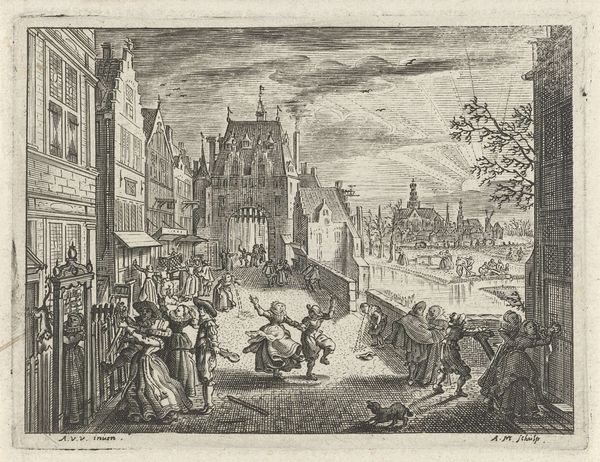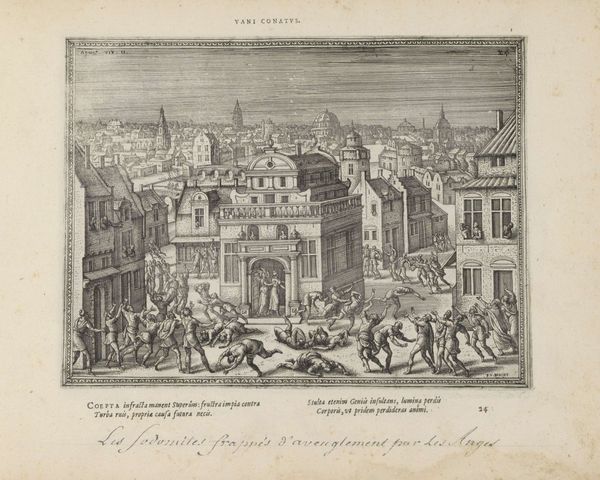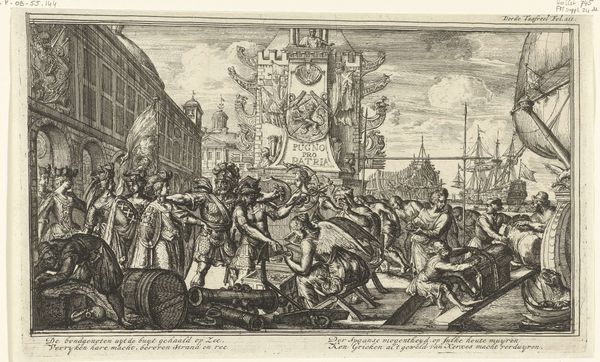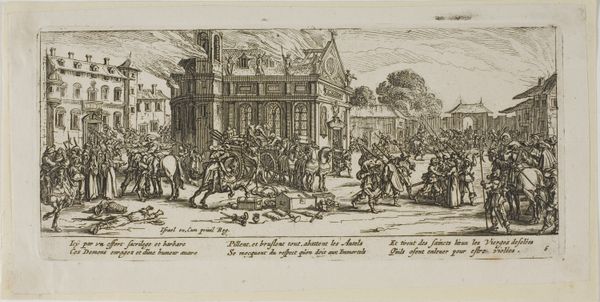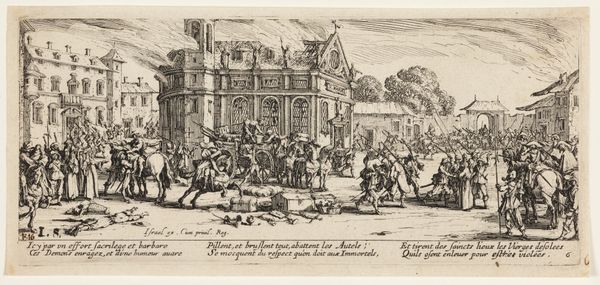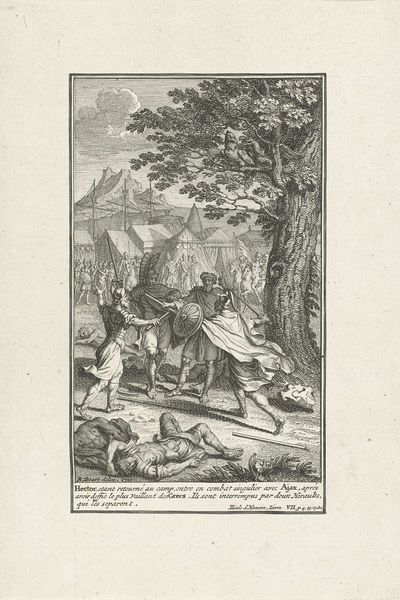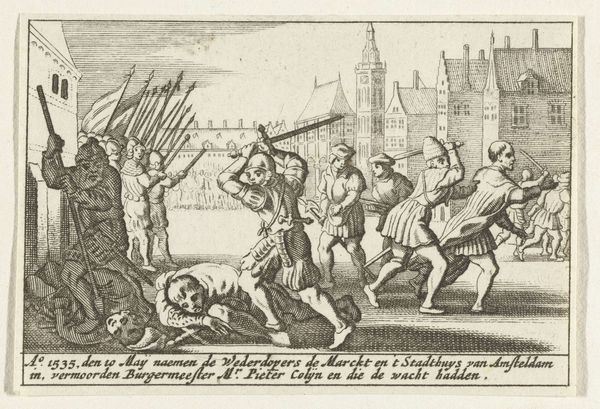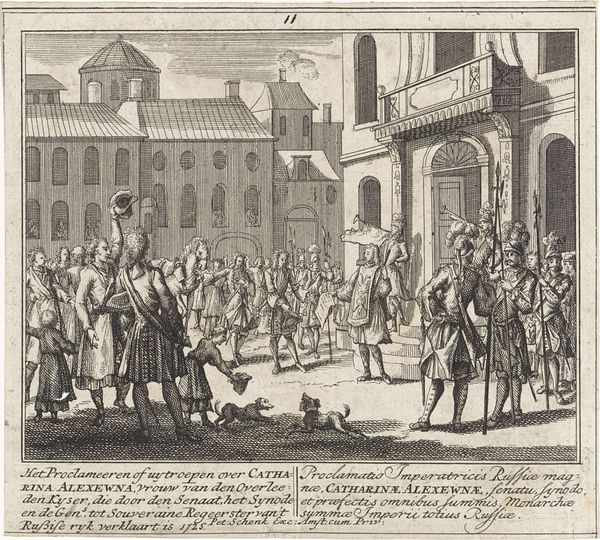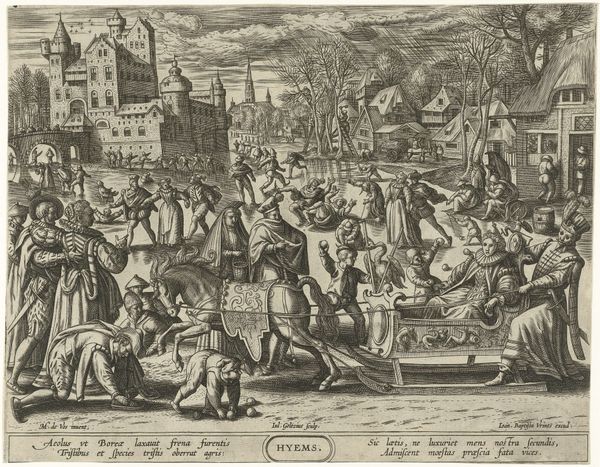
print, engraving
#
aged paper
#
baroque
#
dutch-golden-age
# print
#
old engraving style
#
figuration
#
old-timey
#
line
#
cityscape
#
genre-painting
#
engraving
Dimensions: height 164 mm, width 208 mm
Copyright: Rijks Museum: Open Domain
Curator: Okay, let's talk about "Aap als slager, ca. 1720," an engraving by Matthijs Pool currently held at the Rijksmuseum. What’s your initial reaction? Editor: Total chaos, but… a controlled chaos? Like a bizarre theatrical performance. All these monkey-human hybrids butchering pigs against the backdrop of very orderly Dutch houses is slightly unnerving. Curator: Pool's work often has that edge, doesn’t it? This piece, rendered with incredibly fine lines, plunges us into a world where the roles are reversed. The cityscape seems normal but the activity on the streets is definitely satirical. Editor: Absolutely satirical, with shades of commentary on power, class, and social order, which seems appropriate to reflect Dutch golden age society. I mean, who is butchering who here? The monkeys look pretty empowered to say the least. Curator: There's a certain carnivalesque quality to it, don't you think? It's not just about butchering pigs; it's about upending expectations, highlighting absurdity within the structures of daily life. It is like a theater scene filled with mischievous characters that mock common ideals. Editor: The engraving's themes intersect with critiques of colonialism and animal rights which, of course, had roots in the eighteenth century. These animal-human hybrids reflect social concerns about morality through satire. Curator: The use of text under the image is fascinating; a mix of Dutch and what seems like a butchered French. The baboon figure lurking within the architectural element has some of the original Dutch text, almost like a commentary on truth. Editor: Exactly! This approach emphasizes how Pool’s technique places this work at the confluence of visual rhetoric and historical critique. This is not just a scene, but an act of socio-political articulation. Curator: Looking at this through our contemporary lens certainly enriches our comprehension. I'm now thinking of our preconceived concepts of species hierarchies. It asks for reflection on our present state of things in such an absurd form! Editor: It shows the continuing relevancy of artworks produced during other periods. The artist takes us on a historical and introspective excursion on power structures.
Comments
No comments
Be the first to comment and join the conversation on the ultimate creative platform.

